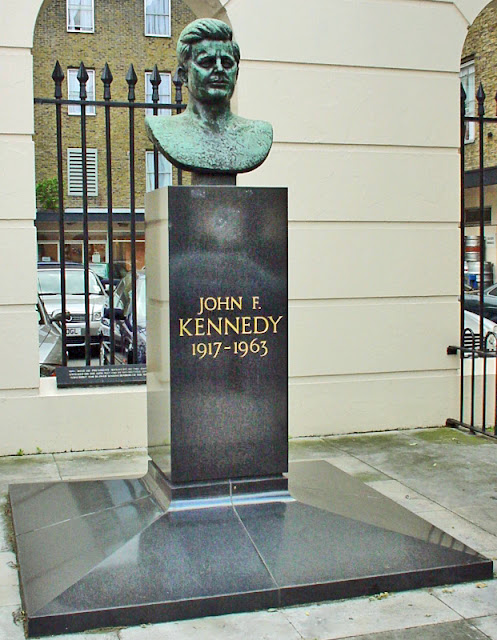Statues are peculiar things aren’t they? All this perfectly reasonable (though not
always strictly rational) debate about Confederate monuments and statues of Christopher
Columbus in America has got us all thinking.
At the very least it reinforces the fairly obvious notion that statues
are usually erected (and then sometimes demolished) in the name of some
ideology or other. There’s no such thing
as a value-free statue. Anybody who’s
praised by one set of people is likely to be condemned by another set.
One of my favorite and most blameless statues is the fellow above, The Walking Man, by George Fuller, a statue in my home town of
Sheffield, England. It dates from 1957,
though I only became aware of it in the 1980s.
I’m not sure which city in the world has the most statues, but I’d
think London has a pretty good claim, and the fact is most Londoners walk
around without really noticing most of them.
Sure, we know that’s Nelson up on
the top of his column and we know that Peter Pan has a statue in Kensington
Gardens, and there are various kings and queens are all over the place,
but we don’t really pay much attention.
Remarkably few Londoners I’ve talked to were aware of the
bust of JFK on Marylebone Road, which was paid for by Sunday Telegraph readers apparently. It was recenty vandalized, and I
wonder what its future is, and equally I don’t know if the vandalism was the
result of anti-Americanism or just a night on the piss
There’s a fine statue of Bela Bartok near South Kensington tube. Bartok lived a blameless life as far as I
know, though I suspect not many people wandering the streets of South Ken know
his music or would like it much if they did.
I found this, from The Observer, May 13th 1923 by Percy A. Scholes, a review of a Bartok concert, "I suffered more than upon any occasion in my life apart from an incident or two connected with 'painless dentistry.' To begin with, there was Mr. Bartok's piano touch. But 'touch,' with its implication of light-fingered ease, is a misnomer, unless it be qualified in some such way as that of Ethel Smyth in discussing her dear old teacher Herzogenberg - 'He had a touch like a paving-stone.' I do not believe Mr. Bartok would resent this simile...” You really think that?
Bartok first stayed in the area in 1882: the statue was originally erected in a different location in 2004, some 60 years after Bartok’s death.
I found this, from The Observer, May 13th 1923 by Percy A. Scholes, a review of a Bartok concert, "I suffered more than upon any occasion in my life apart from an incident or two connected with 'painless dentistry.' To begin with, there was Mr. Bartok's piano touch. But 'touch,' with its implication of light-fingered ease, is a misnomer, unless it be qualified in some such way as that of Ethel Smyth in discussing her dear old teacher Herzogenberg - 'He had a touch like a paving-stone.' I do not believe Mr. Bartok would resent this simile...” You really think that?
Bartok first stayed in the area in 1882: the statue was originally erected in a different location in 2004, some 60 years after Bartok’s death.
So yes, by definition statues tend to be backward
looking and conservative with a small c.
You want their significance to last a while. Here is Los Angeles we try to jazz things up
a bit, and arguably the sense of history is short. There’s a statue of Bruce Lee in Chinatown.
James Dean, up by the Griffith Park Observatory,
Rocky and Bullwinkle on Sunset Strip:
And, for a time there was this statue of Elvis Presley outside a store
on Hollywood Boulevard.
But this is a mass-produced statue, one you can buy. Here’s a doppelgänger in situ in Great Yarmouth, in
East Anglia.
And so t’other day I was walking in the edgelands of Beverly Hills and
I came across this memorial to General Don Jose de San Martin, who I admit is
not exactly an open book to me:
And of course that’s another aspect of statuary: the ignorant can get a
sort of education from statues. As you
see, he was the liberator of Argentina, Chile and Peru, though Peru does look
like a bit of an afterthought, at least on the part of the memorial-maker.
And best of all, around the back of the memorial there’s this somehow
very wonderful map of South America. You
aren’t here.













No comments:
Post a Comment